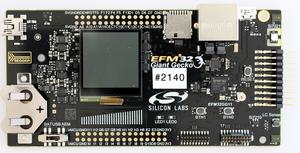Tracing on Silicon Labs EFM32GG11B
Contents
This article describes how to get started with trace on the Silicon Labs EFM32GG11B MCU. This article assumes that there is already a basic knowledge about trace in general (what is trace, what different implementations of trace are there, etc.). If this is not the case, we recommend to read Trace chapter in the J-Link User Manual (UM08001). The Silicon Labs EFM32GG11B MCU implements tracing via pins , so a J-Trace can be used for tracing.
Minimum requirements
In order to use trace on the Silicon Labs EFM32GG11B devices, the following minimum requirements have to be met:
- J-Link software version V6.30b or later
- Ozone V2.56a or later (if streaming trace and / or the sample project from below shall be used)
- J-Trace PRO for Cortex-M HW version V1.0 or later
To rebuild the project our IDE Embedded Studio can be used. The recommended version to rebuild the projects is V6.30. But the examples are all prebuild and work out-of-the box with Ozone, so rebuilding is not necessary.
Sample project
Streaming trace
The following sample project is designed to be used with J-Trace PRO and Ozone to demonstrate streaming trace. The project has been tested with the minimum requirements mentioned above and the EFM32GG11 evaluation board, STK3701A. The sample project comes with a pre-configured project file for Ozone that runs out-of-the box. Please note that this particular needs additional hardware settings to enable external trace probes, see section Specifics/Limitations. In order to rebuild the sample project, SEGGER Embedded Studio can be used.
SiLabs_EFM32GG11_TraceExample.zip
Note: The example is shipped with a compiled .JLinkScript file, should you need the original source, please get in touch with SEGGER directly via our support system: https://www.segger.com/ticket/.
To create your own .JLinkScript file you can use the following project as reference: Tracing on SEGGER_Cortex-M_Trace_Reference_Board
Specifics/Limitations
The EFM32GG11 evaluation board can only be used in 1-bit trace mode as the other trace pins are mapped to other trace pin locations which are not compatible to each other. To enable the external debug header for your trace probe Simplicity Studio is needed. There you can select the debug mode to "IN" instead of "MCU" which is shown on the display on the eval board.
For more information see the Simplicity Studio user manual.
